
This is a resource from CPALMS (www.cpalms.org) where all educators go for bright ideas!
Resource ID#: 60310
Primary Type: Formative Assessment
Triangle Sum Proof
Students are asked prove that the measures of the interior angles of a triangle sum to 180°.
General Information
Subject(s): Mathematics
Grade Level(s): 9, 10, 11, 12
Intended Audience:
Educators
Freely Available: Yes
Keywords: MFAS, proof, triangle sum theorem, triangle interior angle sum, alternate interior angles
Resource Collection:
MFAS Formative Assessments
Attachments
mfas_trianglesumproof_worksheet.docxFormative Assessment Task
Instructions for Implementing the Task
This task can be implemented individually, with small groups, or with the whole class.
- The teacher asks the student to complete the problem on the Triangle Sum Proof worksheet.
- The teacher asks follow-up questions, as needed.
TASK RUBRIC
Accommodations & Recommendations
Special Materials Needed:
- Triangle Sum Proof worksheet
Source and Access Information
Contributed by:
MFAS FCRSTEM
Name of Author/Source: MFAS FCRSTEM
District/Organization of Contributor(s): Okaloosa
Is this Resource freely Available? Yes
Access Privileges: Public
Aligned Standards
Benchmark(s) of focus
The benchmark(s) of focus is the primary focus for student learning and instruction to be taught or reinforced and provides an intentional opportunity for students to work with that concept or skill.
| Name | Description |
| MA.912.GR.1.3: | Prove relationships and theorems about triangles. Solve mathematical and real-world problems involving postulates, relationships and theorems of triangles. Clarifications: Clarification 1: Postulates, relationships and theorems include measures of interior angles of a triangle sum to 180°; measures of a set of exterior angles of a triangle sum to 360°; triangle inequality theorem; base angles of isosceles triangles are congruent; the segment joining midpoints of two sides of a triangle is parallel to the third side and half the length; the medians of a triangle meet at a point. Clarification 2: Instruction includes constructing two-column proofs, pictorial proofs, paragraph and narrative proofs, flow chart proofs or informal proofs. Clarification 3: Instruction focuses on helping a student choose a method they can use reliably. |
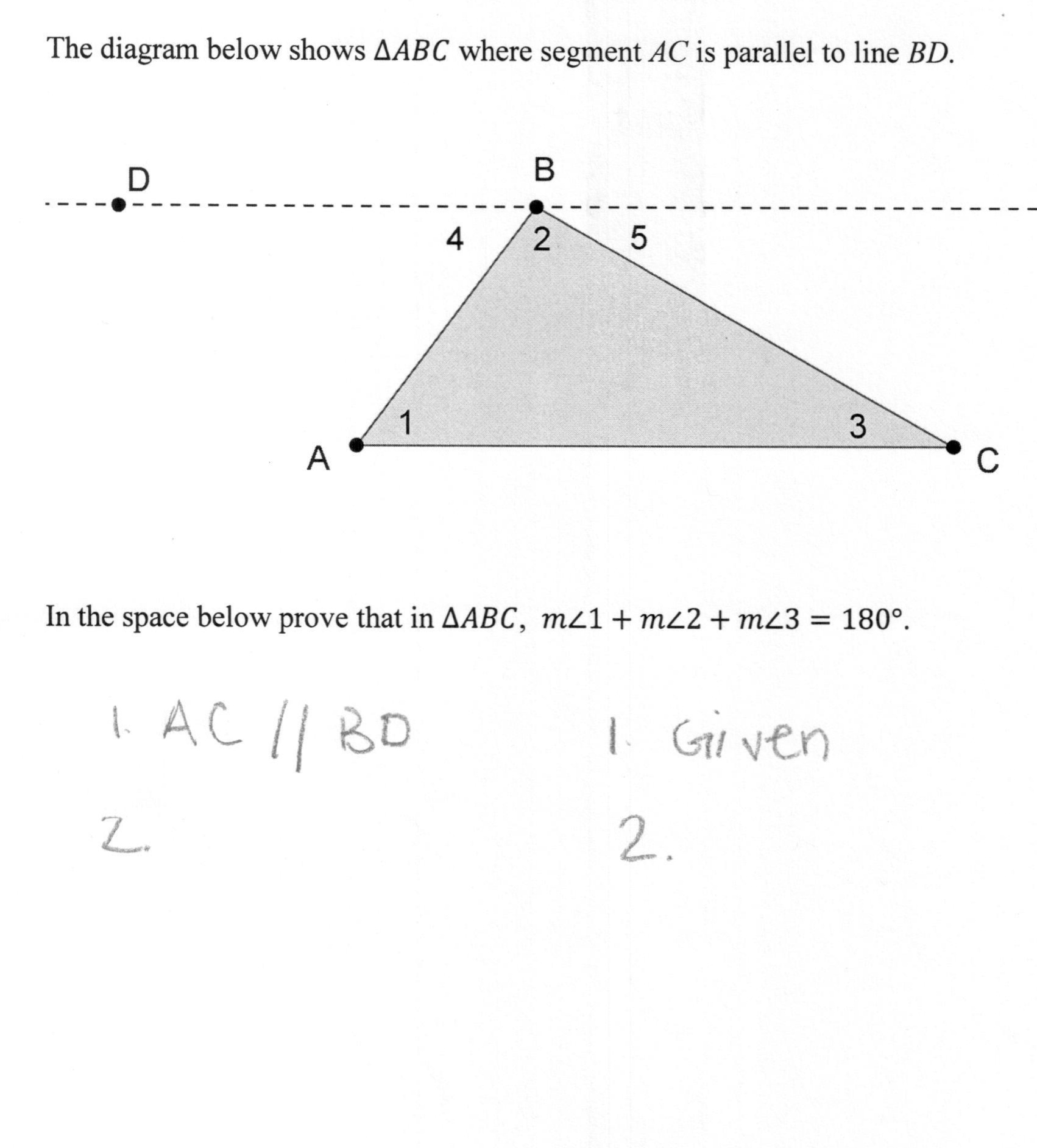

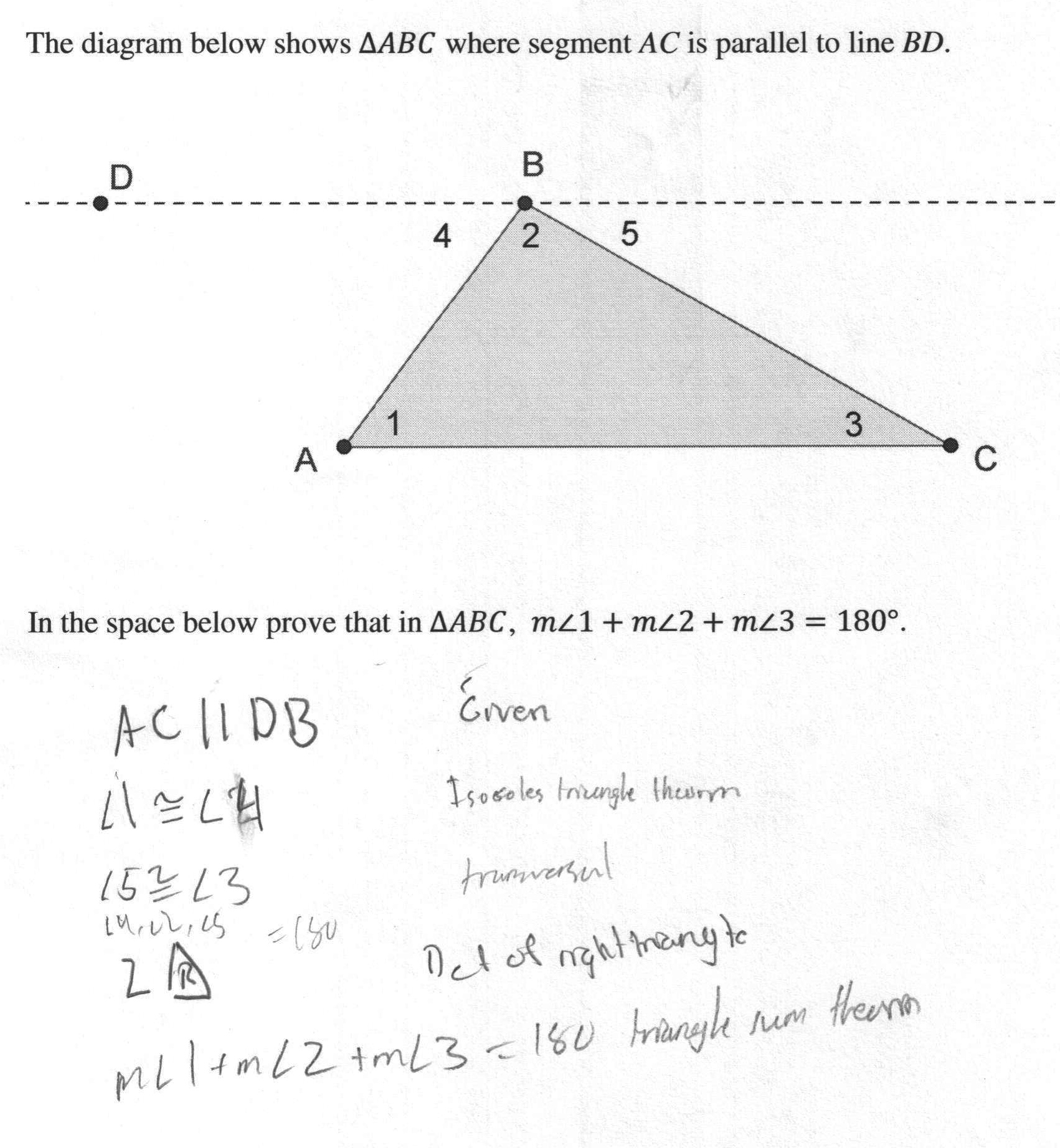
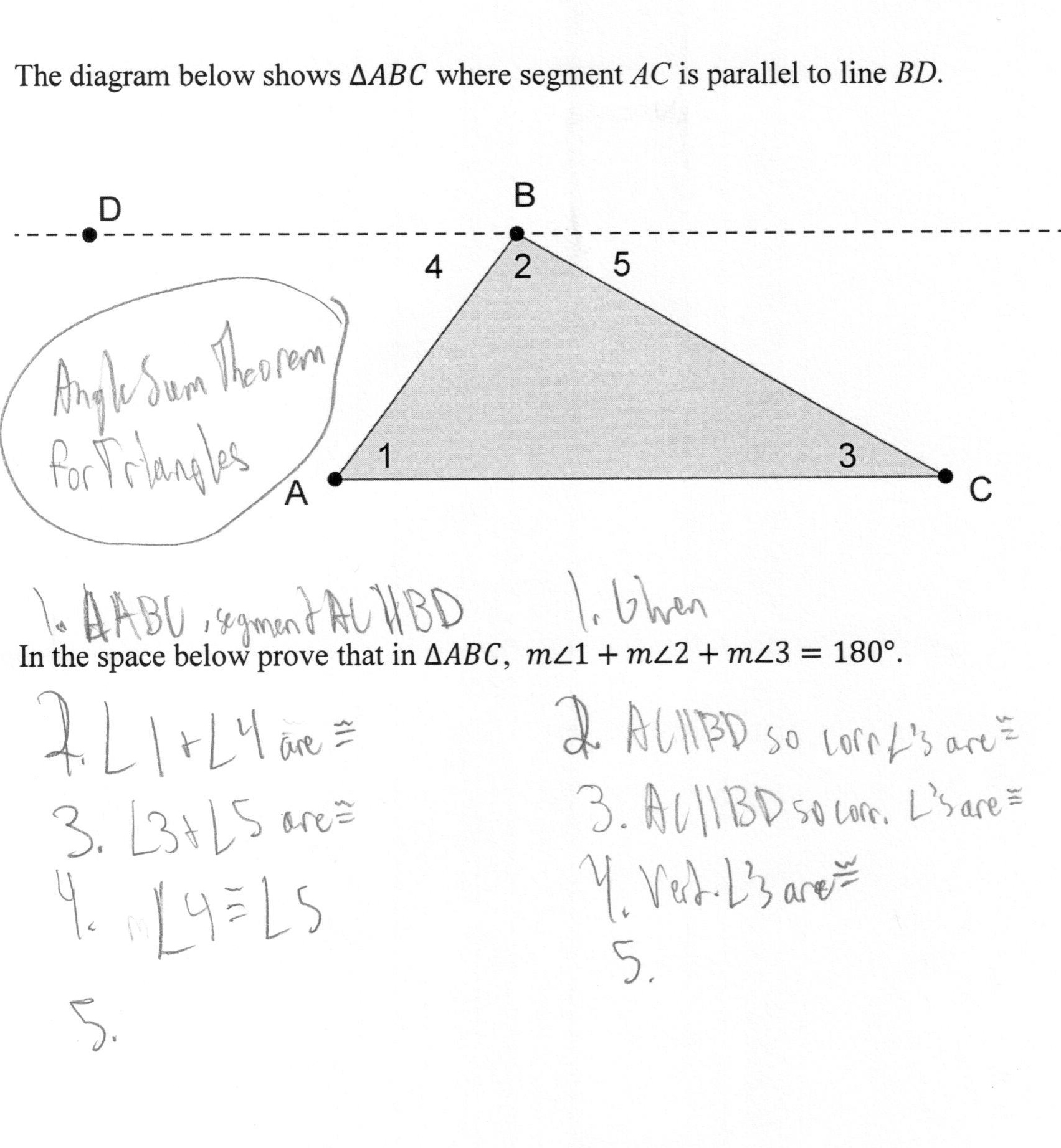
 was added to the diagram? Can you conclude anything from this?
was added to the diagram? Can you conclude anything from this? ) and describing angle measures (e.g.,
) and describing angle measures (e.g.,  ) and guide the student to write equations and congruence statements using the appropriate notation.
) and guide the student to write equations and congruence statements using the appropriate notation. and
and  re vertical.
re vertical. and
and  are corresponding angles (formed by parallel lines intersected by a transversal).
are corresponding angles (formed by parallel lines intersected by a transversal). are a linear pair of angles.
are a linear pair of angles. is the bisector of
is the bisector of  .
.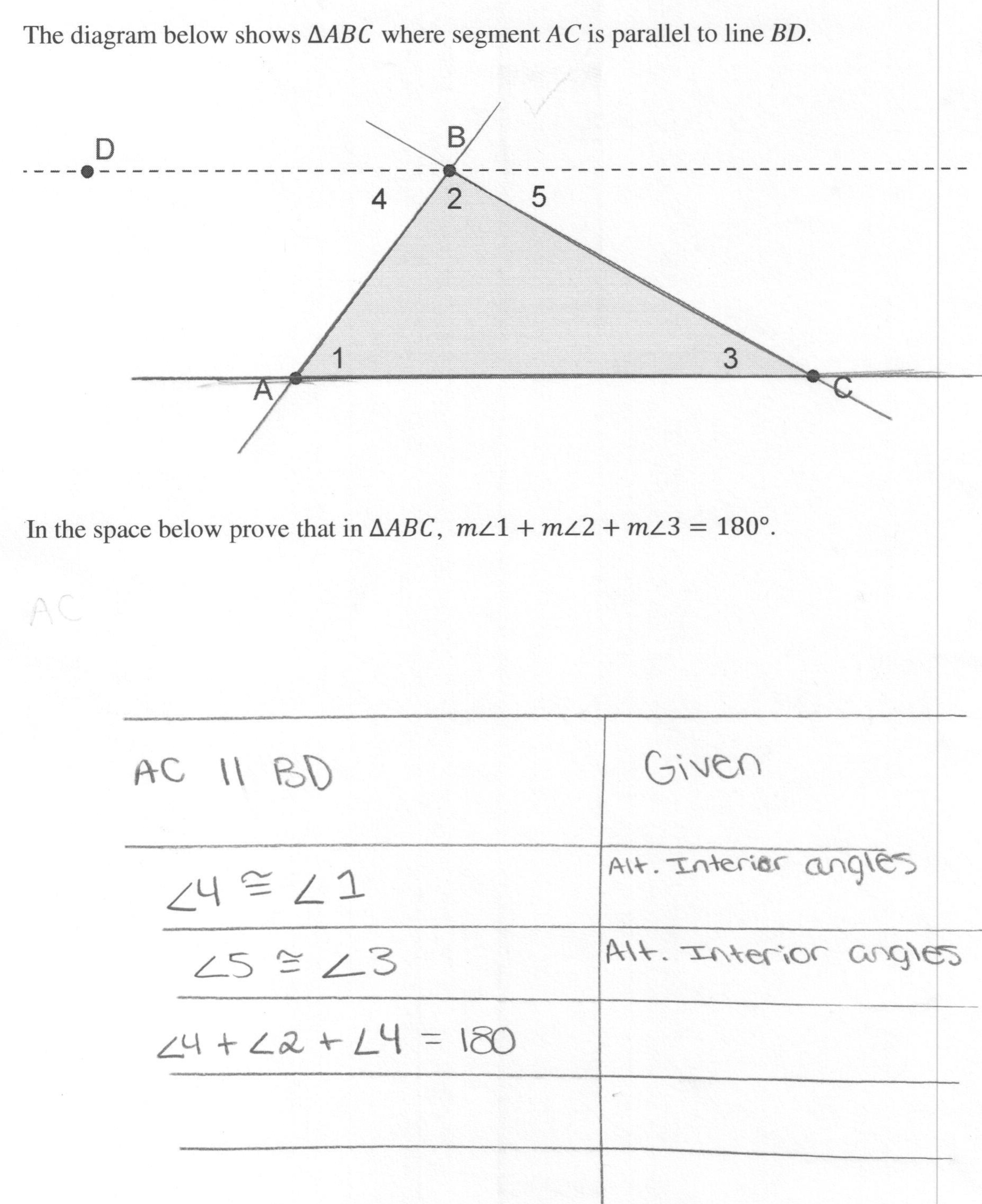
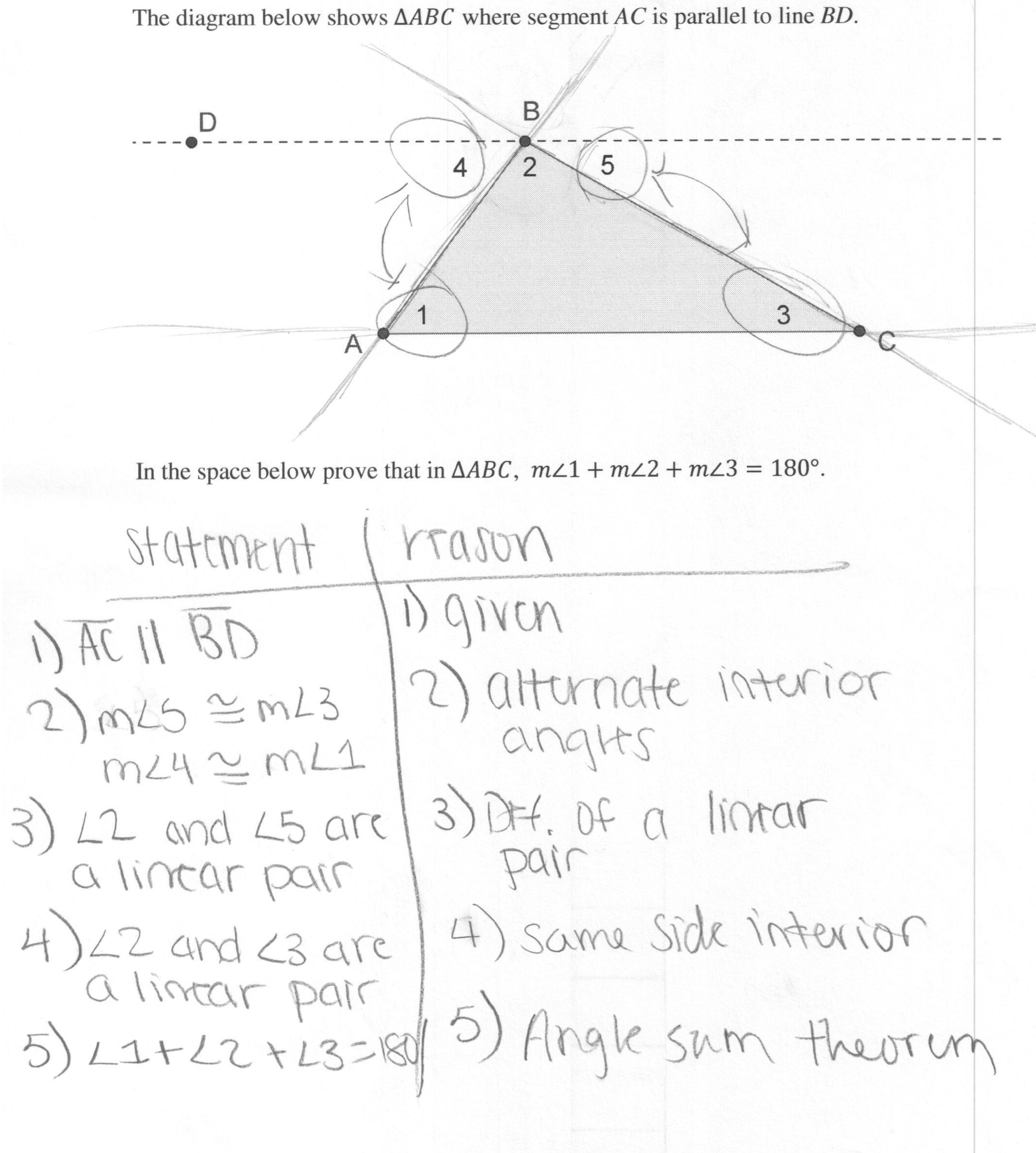
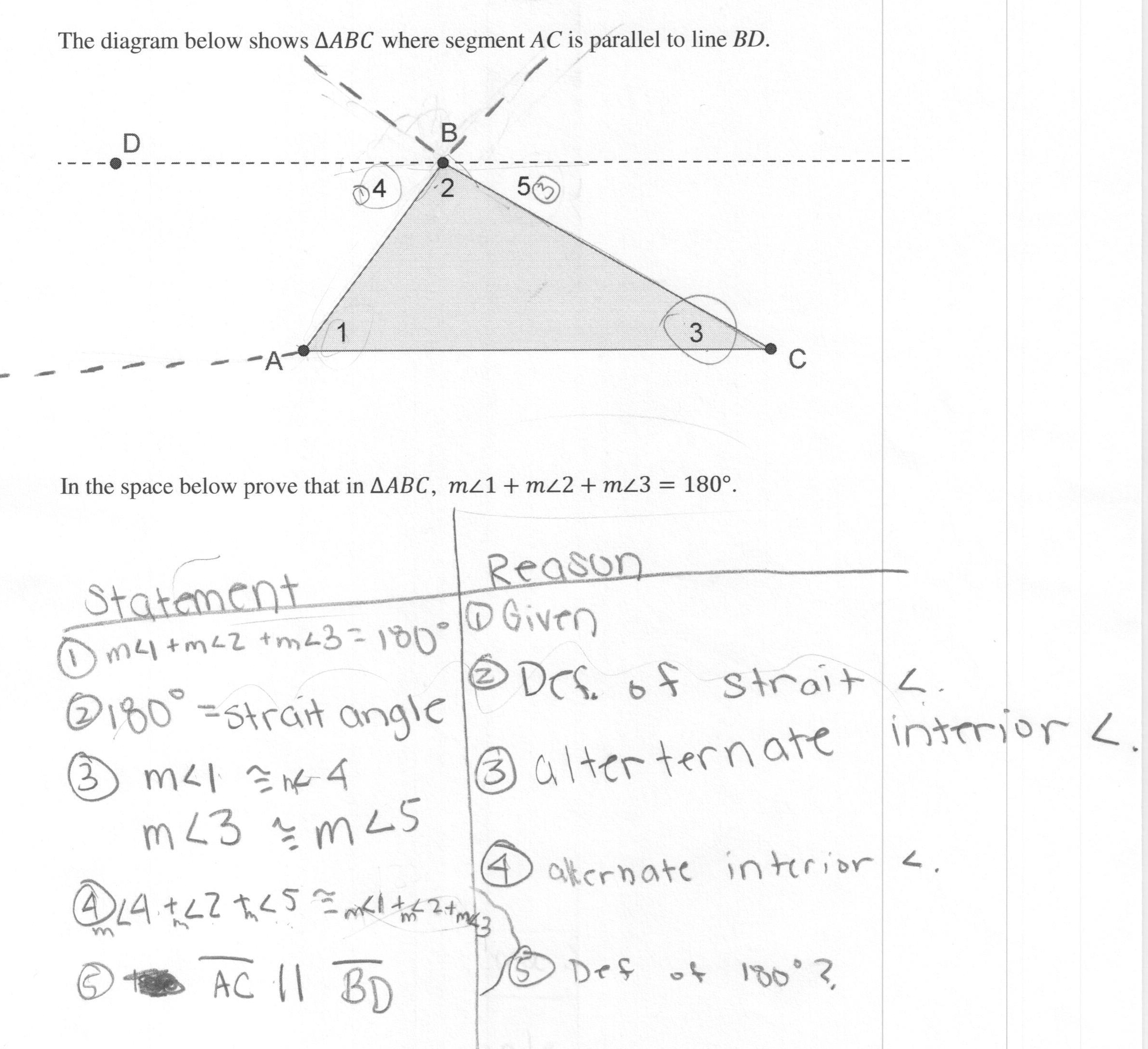
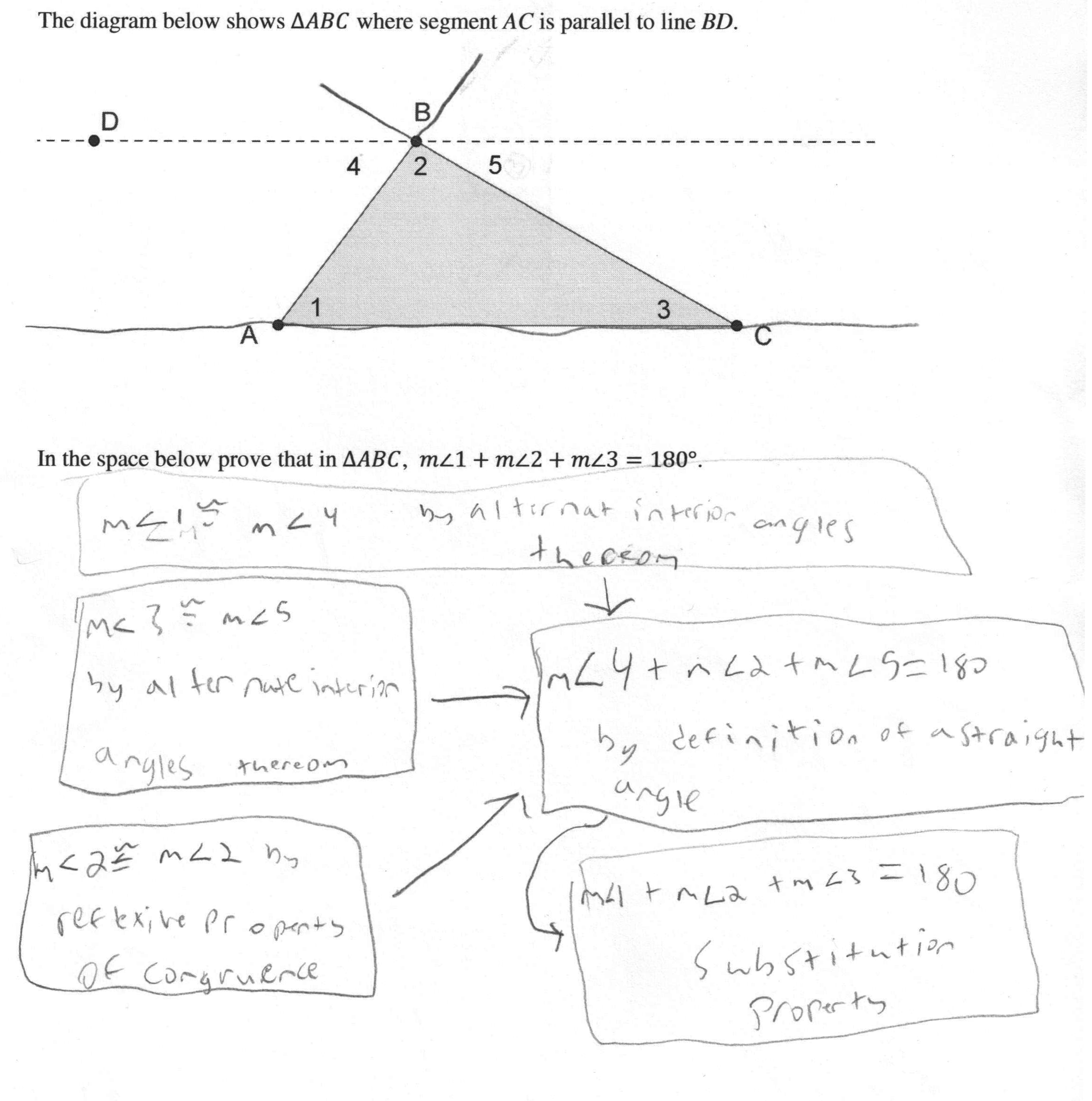

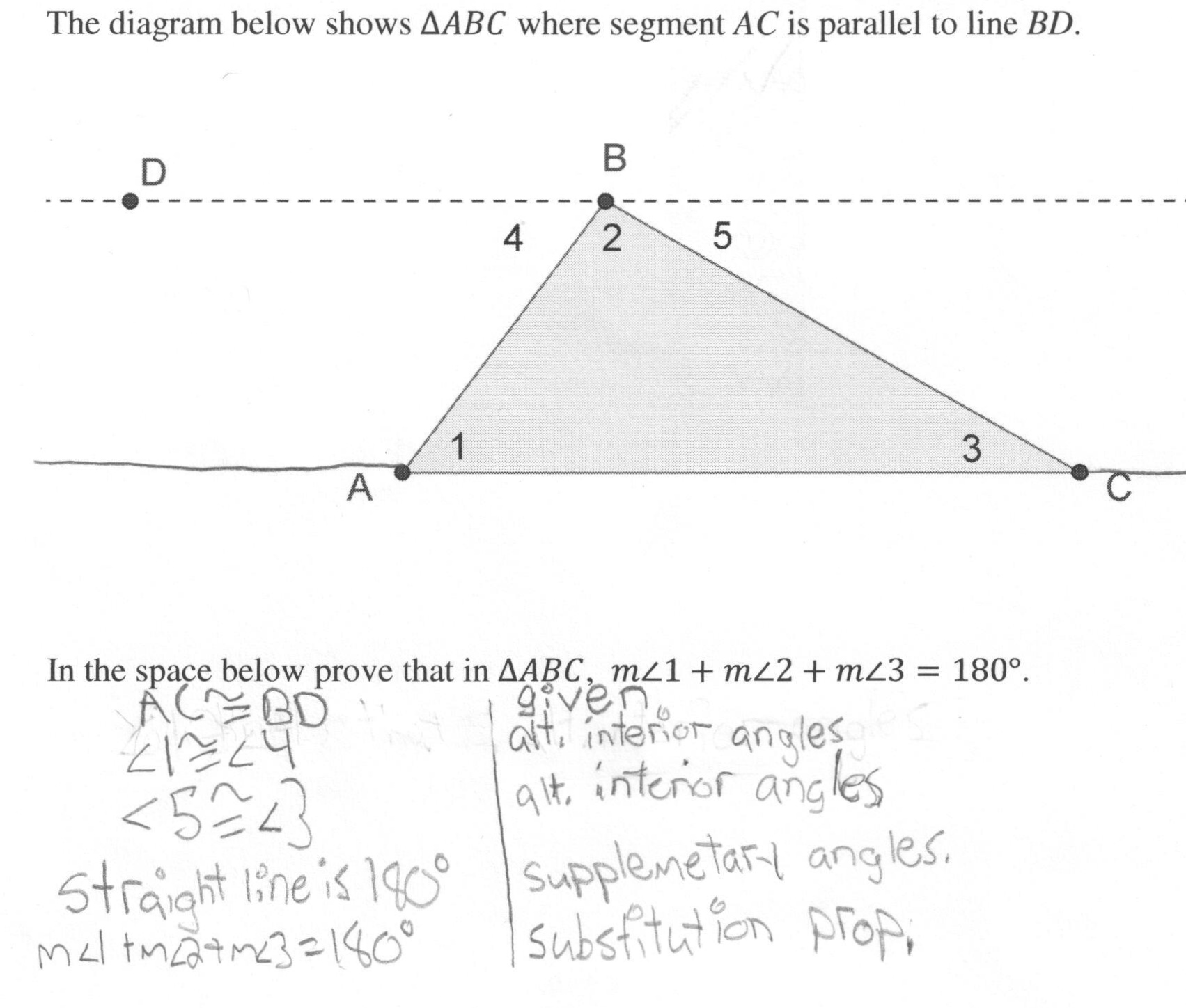

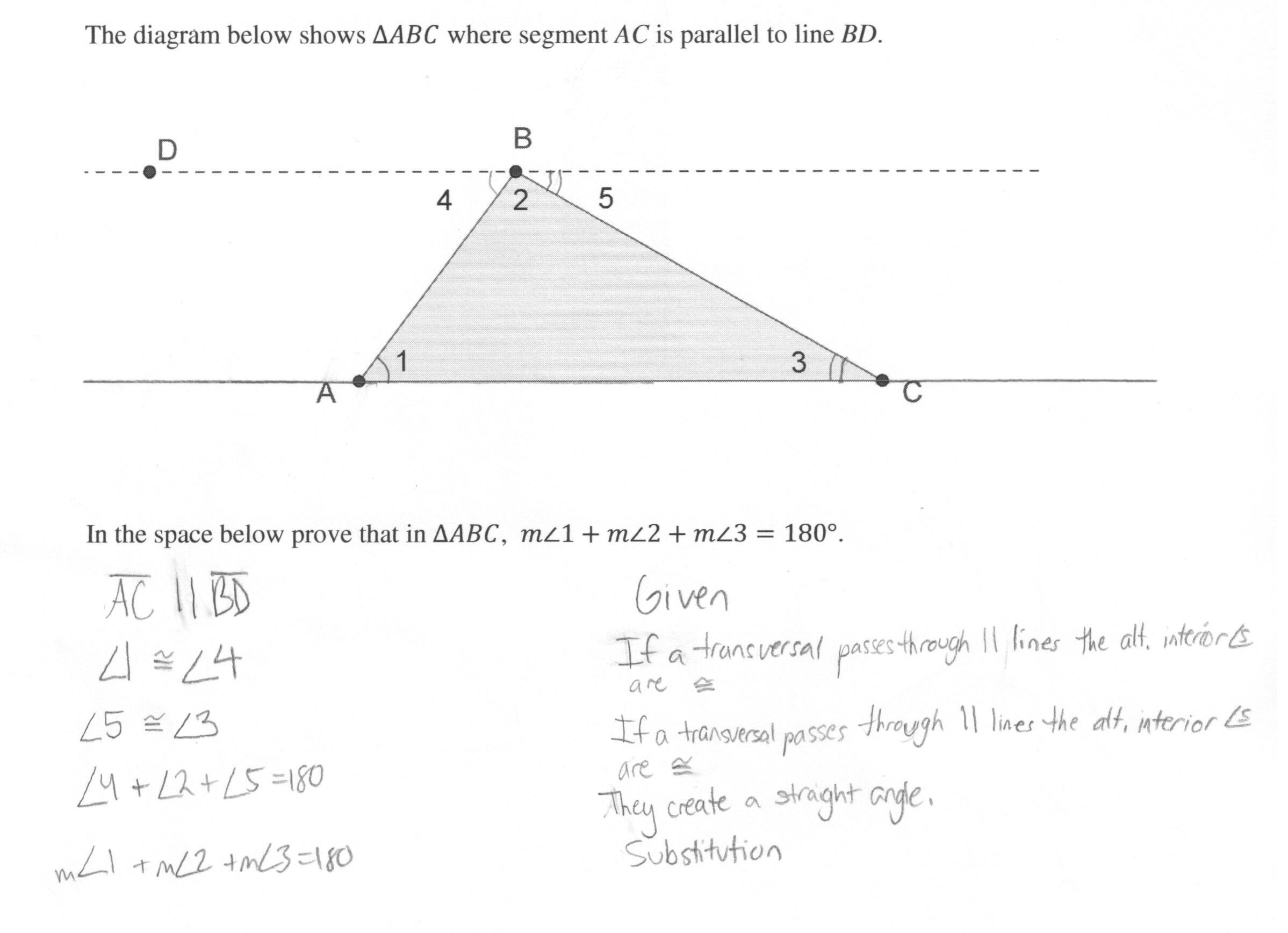

 through point B?
through point B?